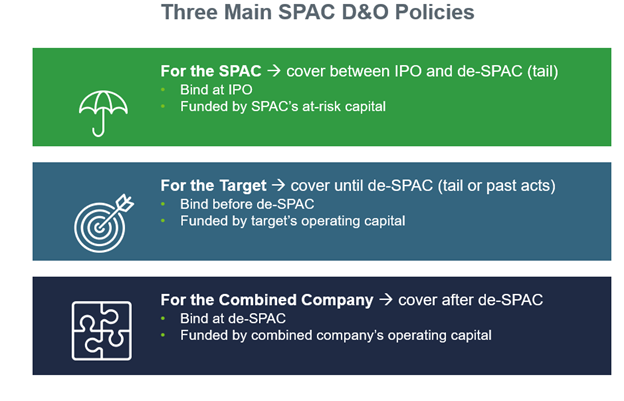
When you receive a loan, is the money taxable? Of course not, because you must pay back the money. That obligation prevents the loan money from being considered income. Of course, if the loan is later forgiven, that forgiveness can trigger taxation, unless you fall within one of the few exceptions to cancellation of debt income.
Can lawyers borrow just like anyone else? Of course, and for that reason, many lawyers and litigation funders are fretting about Novoselsky v. Commissioner, T.C. Memo. 2020-68 (2020). In this case, a lawyer was taxed on litigation funding loans. It’s one of those classic bad-facts bad-law situations, and for that reason, much of the hype needs explanation. In fact, this perfect storm is full of tax lessons.
David Novoselsky, a solo Chicago lawyer, raised $1.4 million with loan agreements he drafted himself. The IRS and Tax Court said they were not loans so the proceeds were taxable as income from the start. The court agreed with the IRS that he should have reported the $1.4 million in “loans” as income. Novoselsky couldn’t complain to his tax lawyer for putting this mess together because there was no tax lawyer; there was not even a business lawyer.
It was all DIY. Novoselsky was an entrepreneurial litigator, so in 2009 and 2011, he entered into “litigation support agreements” with eight doctors and lawyers around Chicago. They fell into three groups, each with a pre-existing stake in the litigation: (i) doctors who were plaintiffs in lawsuits Novoselsky was cooking up; (ii) doctors whose economic interests were aligned with the plaintiffs; and (iii) lawyers with whom Novoselsky had fee-sharing agreements.
He documented the litigation support agreements as nonrecourse loans, promising a high rate of interest or a multiple of the investment. He did not report them as income on his 2009 and 2011 tax returns, but on audit, the IRS said the $1.4 million was not a loan. When Novoselsky refused to extend the statute of limitations—standard fare in an audit—the IRS assessed taxes and penalties totaling over $600,000.
Novoselsky went to Tax Court, but proceedings were stayed when he declared bankruptcy in 2014. Novoselsky acted as his own bankruptcy lawyer too, and he emerged from bankruptcy without a discharge. Back in Tax Court—yet again pro se—he argued that nonrecourse loans were standard for litigation funders, with security on the case or cases in question.
Unfortunately, Novoselsky didn’t bother with security agreements. In their place, he put language in the litigation support agreements requiring him to pay the investor “at the successful conclusion of this litigation.” If the litigation was a bust, he would have no obligation to pay. This probably sounded like DIY common sense, but the Tax Court cited numerous cases holding that a loan is not a loan for tax purposes if it is contingent on the occurrence of a future event. That specifically includes obligations that are contingent on the outcome of litigation.
The Tax Court reasoned that the obligations under these litigation support agreements were contingent on successful lawsuits, so they were not loans. It’s not the same thing as a nonrecourse loan, even though the effect might be similar. The burden then shifted to Novoselsky to provide another justification for excluding the advances from his declared income. He claimed they were gifts or were deposits held “in trust” for investors, but the Tax Court didn’t buy either one of those explanations.
The Tax Court even went through the seven-factor test from Welch v. Commissioner, 204 F.3d 1228 (9th Cir. 2000), which the Ninth Circuit developed to help determine whether funds from a business associate were a loan or taxable income. The Tax Court said these litigation support agreements were labeled “loans,” but there was no promissory note, no payment schedule, no security, and no payments of principal were ever made. Some called for interest or a fixed-dollar premium, but no interest or other amount was ever paid. The advances were payable only out of future litigation proceeds.
The Tax Court turned to the seventh Welch factor, the most important: Had the parties conducted themselves as if the transactions were bona fide loans? Nope. Each investor agreed that Novoselsky had no obligation to pay unless the litigation was a success. In discussing the seventh Welch factor, the Tax Court referenced Frierdich v. Commissioner, T.C. Memo. 1989-393, aff’d, 925 F.2d 180 (7th Cir. 1991).
In Frierdich, a widow hired an attorney to represent her as the executor of her late husband’s estate. The widow was well acquainted with the attorney, who had been her husband’s partner in various real estate ventures. The attorney had also dealt with the widow in certain business matters, so they came to an unusual arrangement.
The widow not only hired the attorney to provide legal services, but also lent him $100,000. The attorney gave the widow a note bearing interest at 8%, but there was no fixed schedule for repayment. Instead, the principal and interest were payable when the attorney was due his fee, which was “subject to [the] closing of the estate.” The widow was authorized to deduct the loan balance from the attorney’s fee.
In Frierdich, the Tax Court re-characterized the widow’s loan as an advance payment of the attorney’s fee. The attorney’s obligation to pay under the note was not due until he was paid for closing the estate. The Tax Court found that both parties intended that repayment would be in the form of legal services. The finding in Novoselsky extended this analysis to include not only the advances received from the formal plaintiffs in Novoselsky’s cases, but also those received from the doctors and lawyers who had interests in the outcome of the various litigation.
Novoselsky’s counterparties were clients, medical professionals with interests aligned to the interests of his clients, and lawyers with fee-sharing agreements. Repayment was not required unless the litigation was successful, so the contingency determined whether any obligation arose in the first place. The Tax Court held that the investors’ advances were actually compensation for Novoselsky’s legal services.
Real Litigation Funding?
Does this case jeopardize lawyers getting real litigation funding? Not really, since in a commercial litigation funding transaction, the funder should have no pre-existing interest in the litigation. That should make it difficult for the IRS to argue that the funder’s advance is a disguised payment for the attorney’s legal services. As long as the loan documentation does not condition the borrower’s obligation on the outcome of the litigation, Novoselsky should not prevent loans from qualifying as loans, or as purchases for the deals structured that way.
Novoselsky is a reminder—if we need one—that plaintiffs and lawyers should generally not prepare funding documents themselves. They should not include any language suggesting that their obligation to repay a loan depends on the success of the litigation. They should limit the funders’ recourse to a security interest in the litigation proceeds.
Of course, “loans” are not common in commercial litigation funding in the first place. Most are purchases, often prepaid forward purchases. That fact further diminishes the impact of Novoselsky. In the few loans that come along, professional loan documentation usually includes a non-contingent payment obligation. Novoselsky also warns lawyers not to borrow from clients or anyone else with a stake in the case’s outcome.
Otherwise, there is a risk that a lender’s advance may be re-characterized as an advance payment of compensation. If the lender is a professional funder with no prior interest in the lawsuit, the risk seems low. Still, does Novoselsky warn lawyers that they may face a somewhat greater tax risk than plaintiffs who are similarly situated?
Suppose that a plaintiff sells a part of his case under a good prepaid forward contract. It may be awfully difficult for the IRS to find a way to tax the upfront money until the contract closes on the conclusion of the case. But let’s say that only the contingent fee lawyer is the seller under the contract, and the plaintiff is not even participating in the deal.
And let’s say the lawyer is entitled to 40% if the case produces money, and he “sells” his right to half of that fee. Even if the lawyer’s funding deal is documented as a legitimate prepaid forward, it may be more tempting for the IRS to seek ways to attack the arrangement. The lawyer, unlike the plaintiff, is always earning compensation income, so a successful challenge will hit the lawyer with ordinary income. And, of course, the IRS has a long history of going after lawyers to set an example.
Perhaps this is one reason many lawyer funding deals are structured with the plaintiff(s) also participating on some level. It is another reason that the tax timing issues for lawyers may be a little more sensitive than for plaintiffs. In the end, though, the strange case of Novoselsky seems like such a slam dunk for the IRS, and such an obvious loser for the DIY lawyer that it’s also a reminder to all: don’t try this at home!












